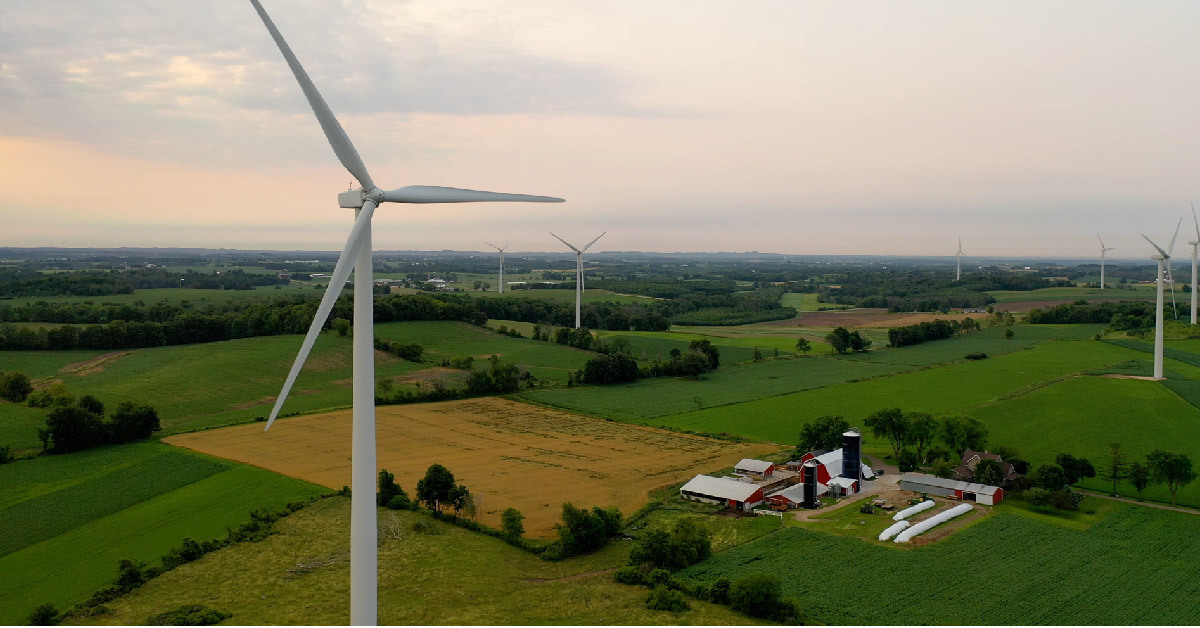Blast Resistant Buildings | Hazard Protection | Renewable Energy
3 Reasons Why Renewable Energy Facilities Need Blast Resistant Buildings and Energy Storage Enclosures


Global decarbonization goals call for expanding green energy from renewable resources such as animal byproducts, upcycled wood, wind, water, and sunlight. The renewable energy industry is growing rapidly, and with it comes the development of more energy facilities. However, while industry safety requirements exist, companies must also hold themselves responsible for ensuring their worker’s safety.
As the industry grows, RedGuard helps to educate renewable energy producers on safety protocols and provides them with the necessary buildings to house and protect their people and property. Below we will discuss the top three reasons renewable energy facilities need blast resistant buildings and energy storage enclosures.
Reason #1: Blast Resistant Buildings and Energy Storage Enclosures Protect Your People and Your Assets
Blast resistant buildings protect human assets and equipment, offering your facility defense from potential hazards and peace of mind that your workers are protected. Blast resistant buildings make great mobile offices so that workers can efficiently work on-site in hazardous areas without worrying about explosions. Control rooms can’t always be located outside of hazardous areas. When that’s the case, a blast resistant building can serve as a standardized control room, making training and operation much easier for workers.
Based on the safety requirements of the area, RedGuard also offers energy storage enclosures, which can be used to house sensitive equipment, serve as battery enclosures, control buildings, E-houses or instrumentation enclosures. The two buildings working together protect assets, workers, and the surrounding communities.
At RedGuard, both of these types of buildings are modular and built off-site for a shorter, more convenient installation time. This makes it easier for companies to scale up operations without custom builds or rewriting operation instructions for each site. Off-site construction also decreases the amount of time and workers needed to install the buildings, thus limiting liability for the facility.
Reason #2: The Renewable Energy Industry Has Unique Hazards
Every industry has its own set of hazards and safety protocols. While renewable energy facilities carry some of the same risks as traditional energy production plants, they also have the risks that come with being stationed in remote locations. The first step toward protecting workers on these sites is evaluating the sector-specific risks.
Biopower Facilities
Biomass production often requires fuel processing, blending, mixing, and transporting. At biopower facilities, risks include fires, explosions, overpressure releases, chemical reactions, toxic exposures, and steam flashes.
Solar Power & Wind Farms
Solar and wind farms are sources of renewable energy that generate electricity from sunlight and wind.
Modular buildings can be used to house a variety of equipment that is necessary for the operation and maintenance of solar and wind farms. One key component is the control panel. The control panel is the central hub for monitoring and controlling the various aspects of the solar or wind farm, such as the flow of electricity and the operation of individual components. It is essential to protect the control panel from the elements, as well as from other external factors that could damage it, such as wildlife or vandalism. Other sensitive equipment that can be housed in an energy storage enclosure includes battery systems, inverters, and transformers.
Hydropower Facilities
The risks at hydropower facilities include transformer issues or accidents related to facility upgrades, turbine-related accidents, or electrocution. Specialty modular buildings can be used as mobile offices and control rooms at hydropower facilities.
Reason #3: A New Industry Means New Safety Protocol
It is projected that the estimated growth of solar power will be 30 times more than what it was predicted to be in 2006. Wind and offshore capacity will be four times higher.
Since the COVID pandemic slowed construction rates and interrupted the supply chain, new facilities have been subjected to sudden starts and stops. This means facilities are increasing at a previously unimaginable pace. But there are safety risks on any job site, and sometimes the industry’s growth outpaces the creation of new, explicit safety protocols.
Some safety protocols are already in place. For example, as part of the energy industry, there are hazard protocols related to things like pressure, heat, and static electricity (thanks to OSHA’s Work Hazards and Safety Practices in the Electric Power Industry). However, as a comparison, the oil and gas industry does not have explicit federal laws or regulations about the best protective equipment required to mitigate damage from explosions and has instead mitigated hazards through the recommended practices of the American Petroleum Institute.
While OSHA oversees worker safety in the U.S., and the renewable energy industry has to abide by training requirements for workers and injury prevention guidelines, renewable energy facilities still have a responsibility to confirm that their employees are fully protected.
RedGuard's Commitment to Renewable Energy Facilities
Whether a company is building a new facility or upgrading current operations, it's best to plan ahead to protect your people and property from worst-case scenarios. RedGuard can provide the renewable energy industry with the following buildings and services:
- LeaseFleet - A variety of blast resistant buildings made up of an extensive leasable, ready-to-use fleet.
- RediSuite - Pre-engineered suite-quality buildings, available in several existing layouts.
- SafetySuite - Completely custom modular blast resistant buildings.
- VersaBilt - Chemical storage buildings.
- SiteBox- Non-blast storage and mobile offices.
- Armoda- Energy storage enclosures, technical/electrical buildings for applications such as Motor Control Centers (MCCs) and Switchgear
- Engineering Services - Siting studies and hazard analyses for new plants or plants being converted to renewable energy.
RedGuard offers the best solution for the renewable energy industry to protect its people and assets. Our customizable, steel blast resistant buildings are constructed off-site to pose fewer safety risks and less disruption to job sites. Best of all, our buildings are always third-party-inspected, and our designs are blast-tested for optimal protection. Contact our expert team today to learn more.
RedGuard Sales & Marketing
The RedGuard sales and marketing team curates and writes on a variety of topics regarding blast-resistance and modular buildings. To inquire about any of the topics you read about on our blog, connect with us.

